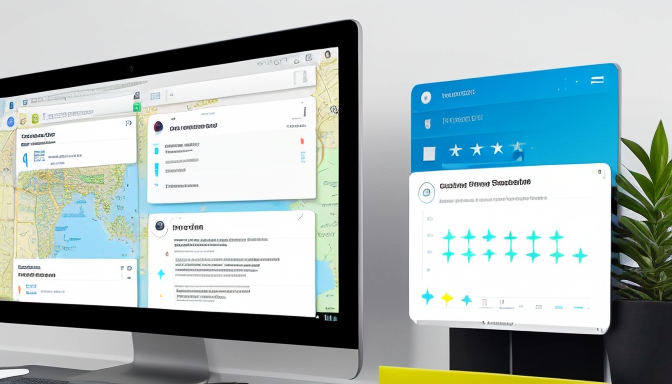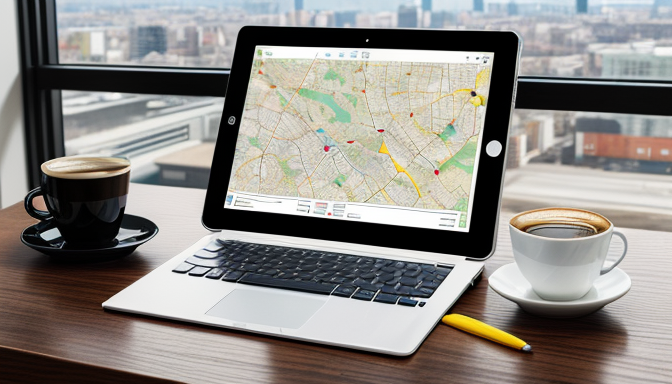
Google Maps Reviews
Negative reviews can feel like a dark cloud hanging over your business. They can tarnish your reputation and shake customer trust. But don’t worry! There are effective strategies to and safeguard your brand. The key is to act swiftly and wisely. Think of it like cleaning up a spilled drink. You wouldn’t just leave it there, right? You’d grab a cloth and start wiping it up. Similarly, addressing negative reviews promptly can help you maintain a positive online presence.
First, let’s talk about why it’s crucial to . In today’s digital world, potential customers often rely on reviews to make decisions. A few bad reviews can deter them. Imagine walking into a restaurant with a 2-star rating. You’d likely think twice before ordering, wouldn’t you? So, it’s essential to keep your ratings up and your reputation intact.
One effective approach is to identify and flag negative maps reviews that are inappropriate or false. Many platforms allow businesses to report reviews that violate their guidelines. This is like raising your hand in class when you see something unfair. By flagging these reviews, you’re not just protecting your business; you’re ensuring that feedback remains fair and constructive. But how do you know which reviews to flag? Look for signs of:
- Inappropriate language
- Personal attacks
- False information about your business
Next, handling negative reviews professionally is vital. Responding to a negative review can feel daunting. But think of it as an opportunity. When you respond thoughtfully, it shows that you care about your customers. It’s like having a conversation with a friend who’s upset. You listen, empathize, and try to find a solution. Here are some tips for a professional response:
- Stay calm and composed.
- Acknowledge the issue.
- Offer a solution or invite them to discuss further.
By engaging with your customers, even when they’re unhappy, you can turn a negative into a positive. It shows potential customers that you value feedback and are committed to improvement.
Finally, to truly minimize the impact of negative reviews, it’s essential to focus on generating positive feedback. Encourage satisfied customers to leave their thoughts online. A simple reminder at checkout can work wonders. Think of it this way: if a tree falls in a forest and no one is around to hear it, does it make a sound? Similarly, if only negative reviews are visible, they overshadow the good. So, let’s make some noise about the positive experiences!
In conclusion, removing negative maps reviews is not just about deleting comments. It’s about actively managing your online reputation. By flagging inappropriate reviews, responding professionally, and fostering positive feedback, you can create a healthy online image. Remember, a little effort goes a long way in maintaining trust and credibility with your customers. So, take charge and keep your business shining bright!

Flag Negative Maps Reviews Properly
When it comes to managing your business’s reputation online, one of the first steps is to . But what does that really mean? It’s not just about hitting a button; it’s about understanding the nuances of the review. Start by identifying reviews that are not only negative but also inaccurate or inappropriate. These could be reviews that contain false information, personal attacks, or even spam. If you see something that doesn’t sit right, it’s time to take action.
First, familiarize yourself with the guidelines of the mapping platform. Each platform has its own rules about what constitutes a flaggable review. For instance, if a review is simply a personal opinion or a legitimate complaint, flagging it might not be the right choice. However, if it crosses the line into offensive territory, you have every right to report it. Think of it like cleaning up a messy room. You wouldn’t leave a stain on the carpet just because it’s there, right? You’d take the necessary steps to fix it!
Next, gather your evidence. When you flag a review, provide context. This means explaining why you believe the review is inappropriate or false. It’s like telling a story. You need to set the scene. For example, if a reviewer claims they visited your restaurant and found it closed, but you have records showing it was open, include that information when you flag the review. This helps the platform understand your side of the story.
Here’s a quick look at the steps to flag a negative maps review:
- Identify the review: Look for inaccuracies or inappropriate content.
- Review the guidelines: Understand what qualifies for flagging.
- Gather evidence: Collect any relevant information to support your case.
- Submit your flag: Use the platform’s tools to report the review.
Remember, the goal of flagging negative maps reviews is not just to remove them. It’s about protecting your business’s reputation. By taking a proactive approach, you can ensure that your online presence reflects the true nature of your business. After all, you want potential customers to see the best version of your brand. So, when you spot a review that doesn’t belong, don’t hesitate. Take the steps to flag it properly, and keep your business shining bright.

Handle Negative Maps Reviews Professionally
When it comes to negative maps reviews, how you respond can make all the difference. Imagine walking into a restaurant and hearing a customer complain loudly about their meal. What if the owner came out, listened, and offered a solution? That’s the kind of approach you want to take with your online reviews. Responding professionally can turn a negative experience into a positive one, not just for the reviewer but for potential customers who read your response.
First, always acknowledge the reviewer’s feelings. A simple statement like, “I’m sorry to hear you had a bad experience,” shows empathy. It’s crucial to let them know you care. You’re not just a faceless business; you’re a person who values feedback. This is where you can start building trust. Remember, it’s not just about defending your business; it’s about understanding your customers.
Next, address the specific issues they mention. If a customer complains about long wait times, for example, you could say, “We appreciate your feedback about the wait time. We are currently working on improving our service speed.” This shows that you’re not only listening but also taking action. It’s like saying, “We’re on it!” This can help shift the focus from the negative to the positive.
Now, what if the review is unfair or false? It’s tempting to get defensive, but resist that urge. Instead, stay calm and professional. You can politely clarify any misunderstandings. For instance, if a reviewer claims they were overcharged, you might respond with, “We strive for transparency in our pricing. If you believe there was an error, please contact us directly.” This keeps the conversation open and shows that you’re willing to resolve issues.
But don’t forget about the onlookers. Many potential customers will read your responses. They’re looking for how you handle criticism. Your professional demeanor can sway their decision. So, keep your responses respectful, even if the review stings. It’s like a public relations exercise; you want to shine in front of your audience.
Lastly, encourage positive feedback. After resolving an issue, invite satisfied customers to share their experiences. You might say, “If you enjoyed your visit, we’d love for you to leave a review!” This helps balance out the negative maps reviews. A few glowing testimonials can overshadow a single bad one, making your business look trustworthy and reliable.
In summary, handling negative maps reviews professionally is all about empathy, clarity, and engagement. By responding thoughtfully, you can not only mitigate the impact of negative feedback but also enhance your reputation. Remember, every review is an opportunity to show your customers that you care. So, take a deep breath and respond with grace. Your future customers are watching!

Minimize Negative Maps Reviews Impact
This article discusses effective strategies for managing and mitigating negative reviews on mapping platforms, ensuring businesses maintain their reputation and customer trust.
In today’s digital world, negative maps reviews can feel like a dark cloud hovering over your business. But don’t worry! There are ways to turn that cloud into a silver lining. First off, it’s crucial to understand that negative reviews are part of the game. Every business faces them at some point. The key is to minimize their impact. How do you do that? Let’s dive in.
One effective strategy is to actively encourage your satisfied customers to leave positive feedback. Think of it as building a fortress around your reputation. The more positive reviews you gather, the less those negative comments will sting. You can do this by:
- Sending follow-up emails after a purchase.
- Offering small incentives, like discounts, for leaving a review.
- Making it easy to leave feedback on multiple platforms.
Another tactic is to maintain a strong online presence. This means being proactive on social media and engaging with your audience. Share updates, respond to comments, and create content that resonates with your customers. When your audience sees you actively participating, they’re more likely to trust you, even when they stumble upon a negative review.
Additionally, consider implementing a customer feedback system. This system allows you to gather insights directly from your customers. By understanding their needs and concerns, you can address issues before they escalate into negative reviews. It’s like having a radar for potential problems. Here’s a simple table to illustrate how this feedback can be categorized:
| Feedback Type | Action |
|---|---|
| Product Issues | Improve product quality |
| Service Complaints | Enhance customer service training |
| Positive Experiences | Encourage sharing on social media |
Lastly, always remember to respond to negative reviews professionally. A well-crafted response can show potential customers that you care about their experience. It also demonstrates that you’re willing to make changes based on feedback. This can turn a negative into a positive, making your business look responsive and caring.
In conclusion, minimizing the impact of negative maps reviews is all about being proactive. Encourage positive feedback, maintain a strong online presence, and engage with your customers. Remember, every negative review is an opportunity to learn and grow. By following these strategies, you can protect your business and keep the focus on the positive. So, let’s keep those negative maps reviews at bay!
Frequently Asked Questions
- How can I flag a negative review on mapping platforms?To flag a negative review, navigate to the review section of your business listing. Look for the option to report or flag the review, and provide a brief explanation of why you believe it’s inappropriate or false. This helps the platform assess the review more effectively.
- What’s the best way to respond to a negative review?Responding to a negative review should be done professionally and promptly. Start by thanking the reviewer for their feedback, acknowledge their concerns, and offer a solution or ask them to contact you directly. This shows potential customers that you care and are willing to improve.
- Can I delete negative reviews?Generally, you cannot delete negative reviews directly. However, you can flag them if they violate the platform’s guidelines. Instead of focusing on deletion, work on improving your overall rating by encouraging satisfied customers to leave positive reviews.
- How can I minimize the impact of negative reviews?To minimize the impact of negative reviews, focus on building a strong online presence. Encourage happy customers to share their experiences, respond to reviews promptly, and maintain active engagement with your audience. This helps overshadow any unfavorable comments.
- What should I do if a review is fake?If you suspect a review is fake, gather evidence to support your claim and report it to the mapping platform. Provide details about why you believe the review is fraudulent, such as discrepancies in the reviewer’s account or their lack of actual experience with your business.



